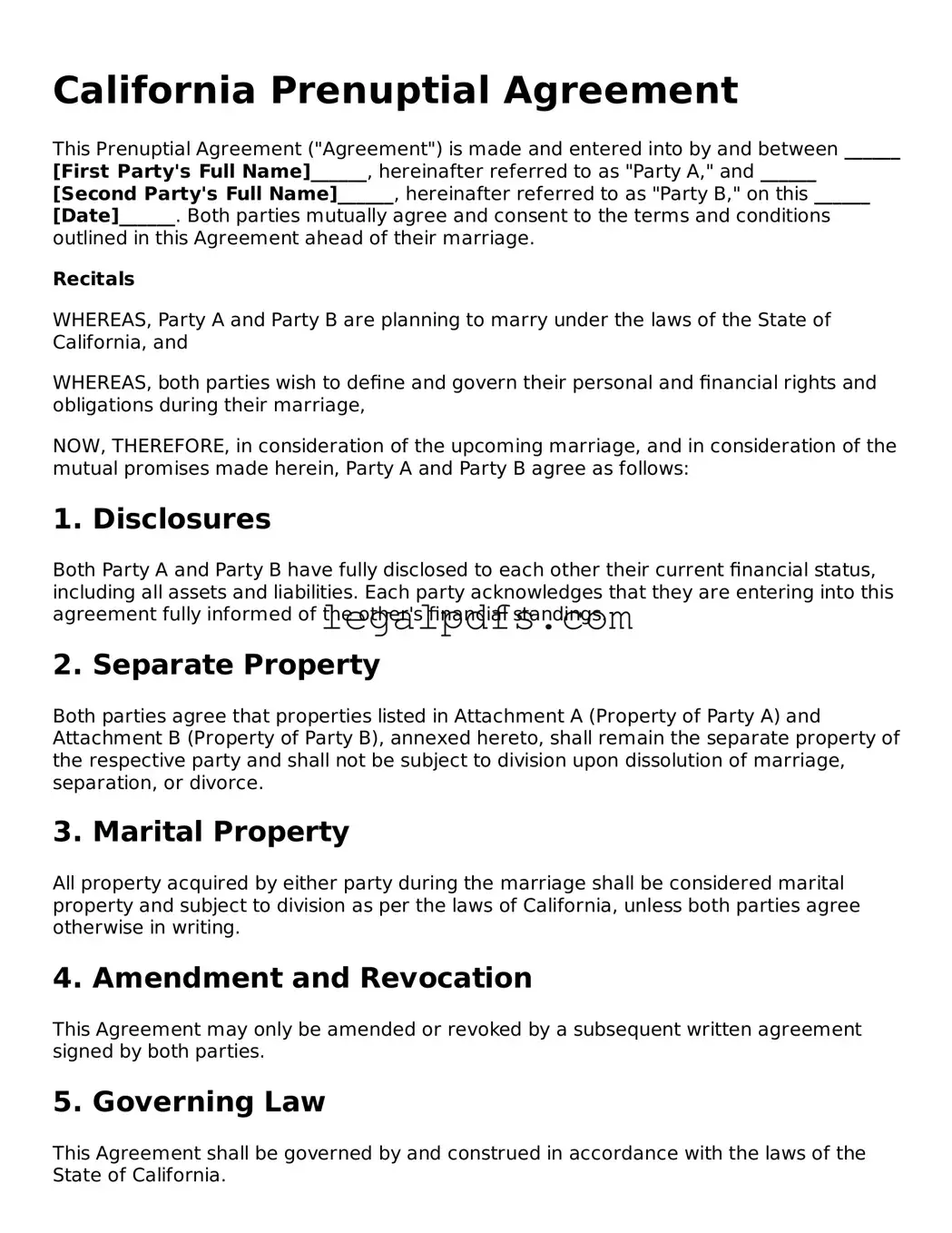California Prenuptial Agreement
This Prenuptial Agreement ("Agreement") is made and entered into by and between ______ [First Party's Full Name]______, hereinafter referred to as "Party A," and ______ [Second Party's Full Name]______, hereinafter referred to as "Party B," on this ______ [Date]______. Both parties mutually agree and consent to the terms and conditions outlined in this Agreement ahead of their marriage.
Recitals
WHEREAS, Party A and Party B are planning to marry under the laws of the State of California, and
WHEREAS, both parties wish to define and govern their personal and financial rights and obligations during their marriage,
NOW, THEREFORE, in consideration of the upcoming marriage, and in consideration of the mutual promises made herein, Party A and Party B agree as follows:
1. Disclosures
Both Party A and Party B have fully disclosed to each other their current financial status, including all assets and liabilities. Each party acknowledges that they are entering into this agreement fully informed of the other's financial standings.
2. Separate Property
Both parties agree that properties listed in Attachment A (Property of Party A) and Attachment B (Property of Party B), annexed hereto, shall remain the separate property of the respective party and shall not be subject to division upon dissolution of marriage, separation, or divorce.
3. Marital Property
All property acquired by either party during the marriage shall be considered marital property and subject to division as per the laws of California, unless both parties agree otherwise in writing.
4. Amendment and Revocation
This Agreement may only be amended or revoked by a subsequent written agreement signed by both parties.
5. Governing Law
This Agreement shall be governed by and construed in accordance with the laws of the State of California.
6. Acknowledgment
Both parties acknowledge that they have had the opportunity to consult with an attorney of their choice and that they fully understand the terms and conditions contained herein.
7. Signatures
This Agreement is executed in duplicate with each party receiving an original.
IN WITNESS WHEREOF, the Parties have executed this Agreement on the day and year first above written.
Party A's Signature: ___________________________ Date: ______
Party B's Signature: ___________________________ Date: ______
Witness's Signature: __________________________ Date: ______
Attachments:
- Attachment A: Property of Party A
- Attachment B: Property of Party B
